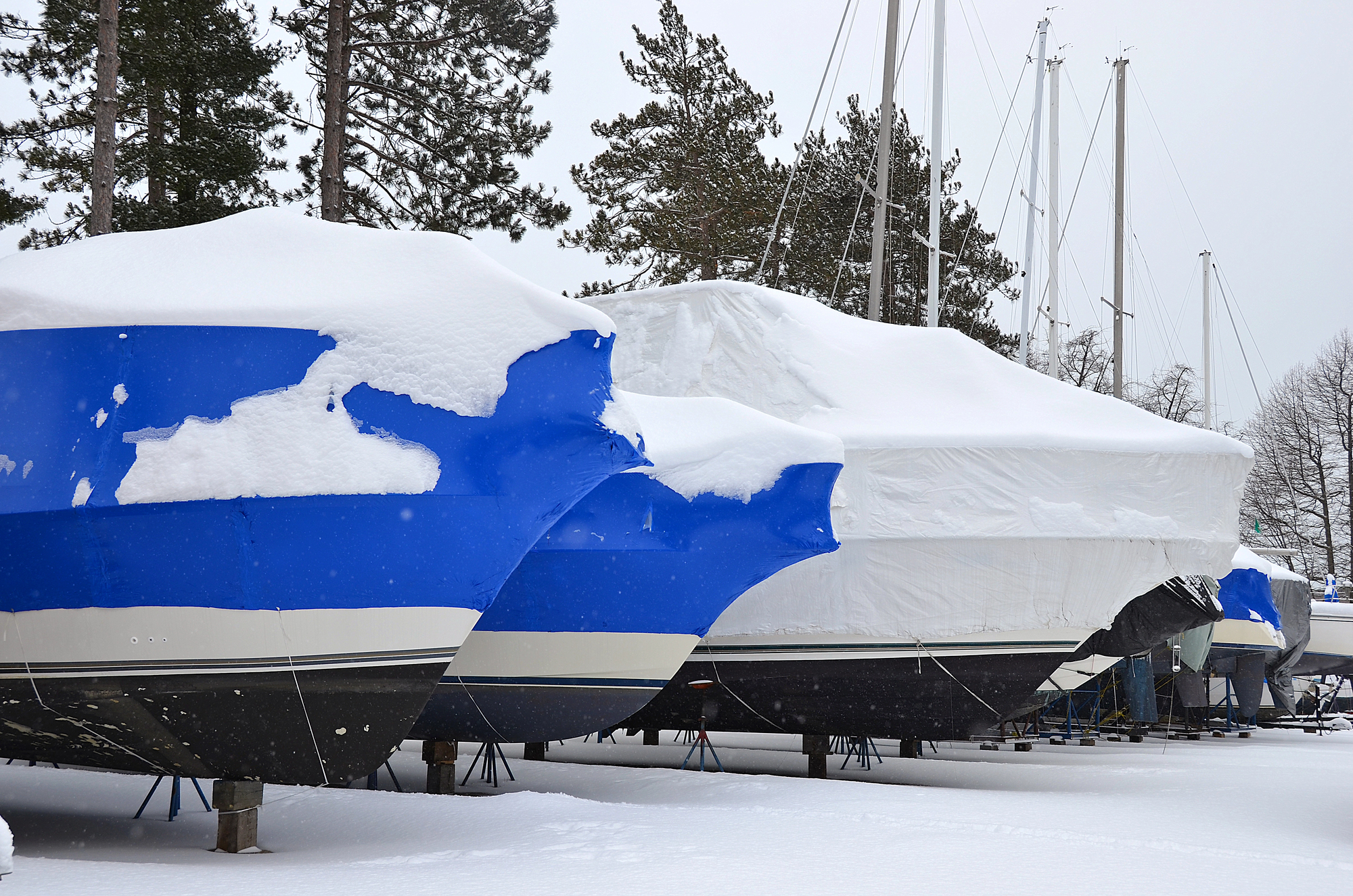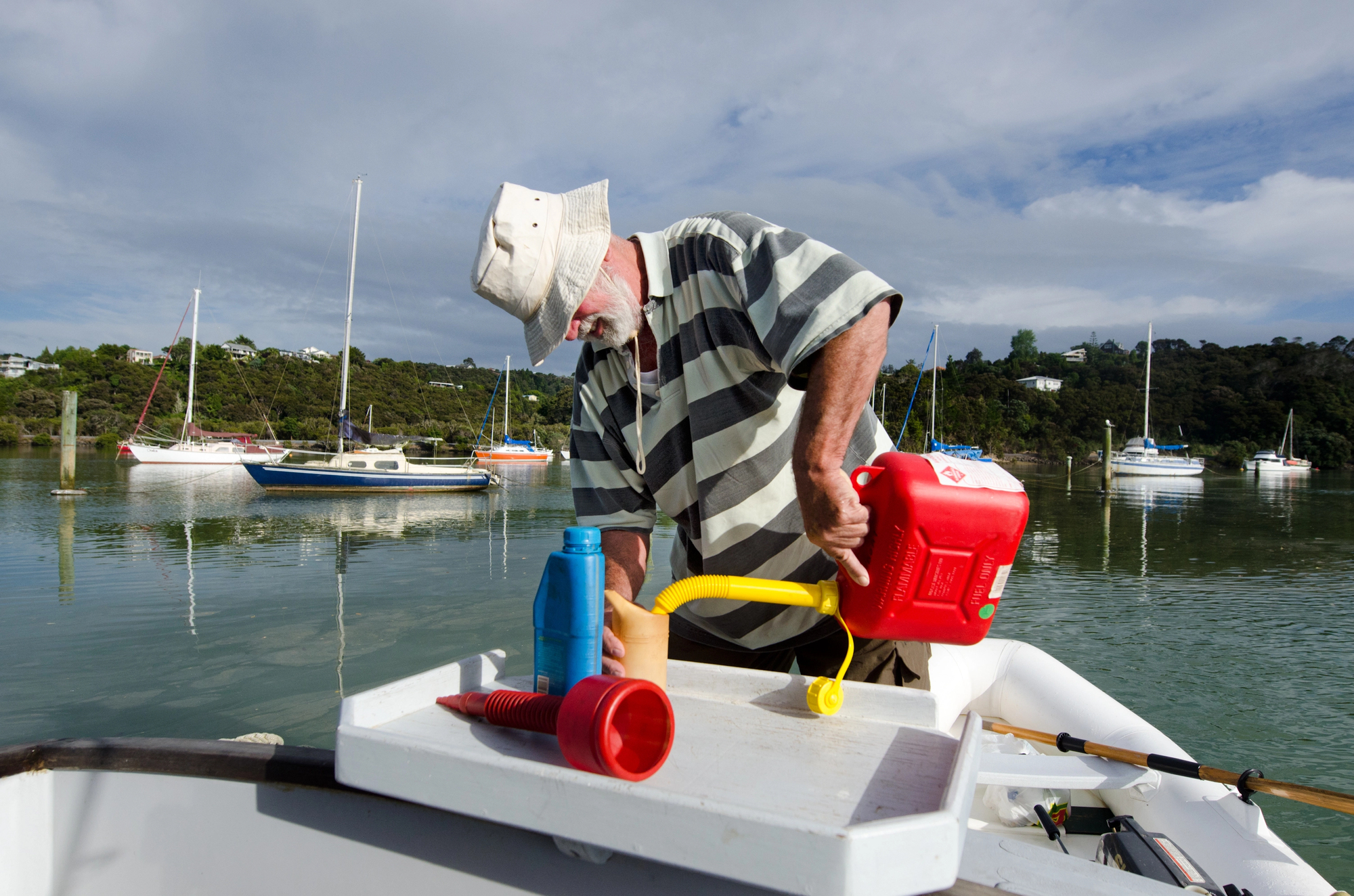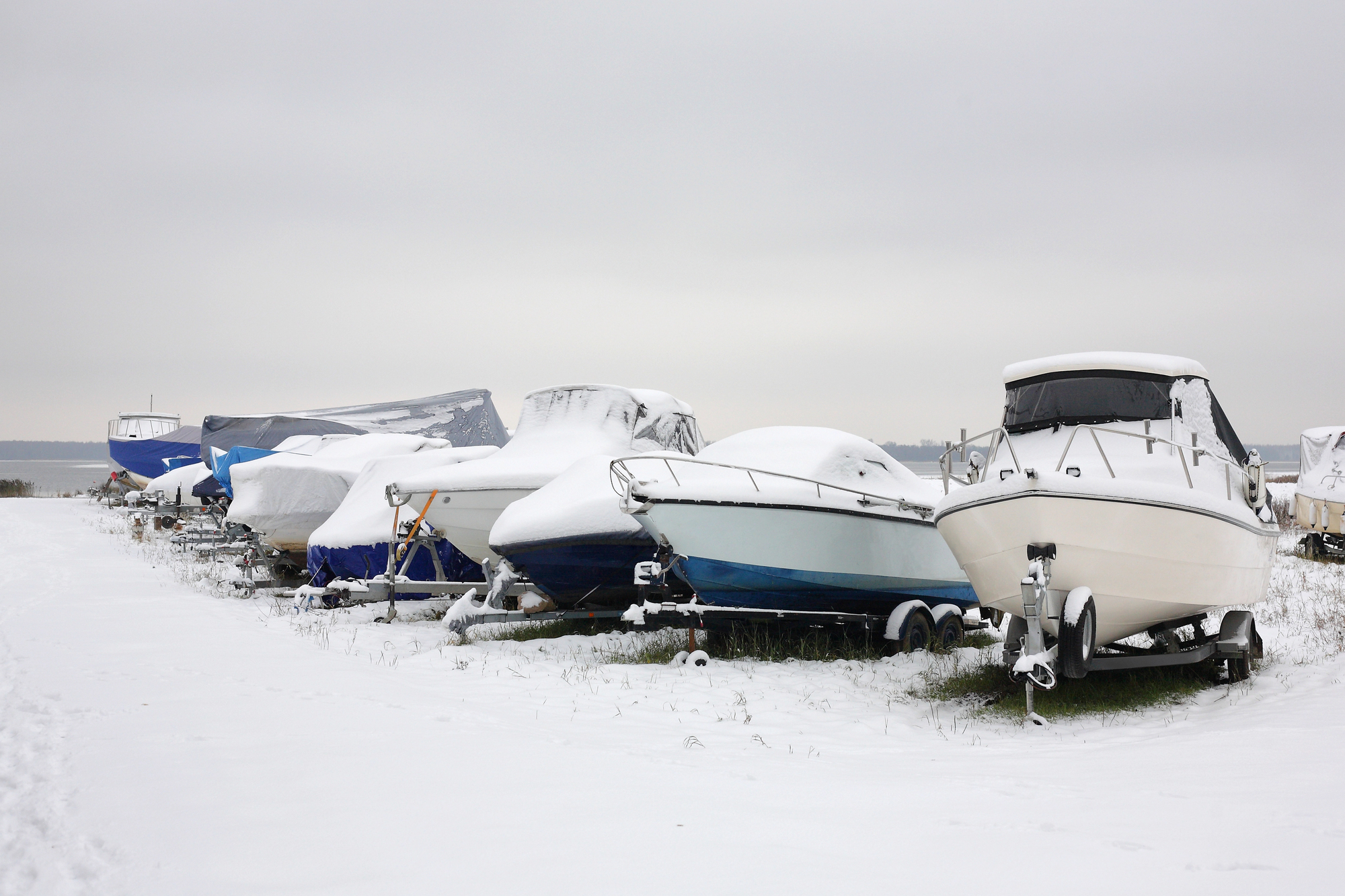
Boating in the winter offers a unique and serene experience. The calm, empty waters and crisp air can make for a peaceful day on the boat. However, winter boating also presents specific challenges and dangers that you won’t encounter during the warmer months.
To safely navigate your boat during the colder season, you need to be fully prepared and well-equipped. In this guide, we’ll cover essential winter boating tips from safety tips for boating in winter conditions, the right gear you should bring, to how to properly prepare your boat for cold weather.
Why Boating During the Winter Can Be Worth It
Boating in the winter offers a unique and rewarding experience that many boater owners overlook.
- Water All To Yourself: One of the biggest advantages is the peace and solitude on the chilly water. With fewer boats out, you can enjoy quieter, more serene environments, often having entire lakes or coastal areas to yourself.
- Landscapes You Don’t See Often: Winter also brings stunning scenery you won’t see with the summer boating season, as the crisp air and snow-covered landscapes create a breathtaking backdrop for your voyage.
- Cold Season Life: Another benefit is wildlife observation. During the colder months, certain species become more visible, and winter boating gives you the chance to spot wildlife that is less active or hidden in summer or warm season.
- Winter Fishing: Lastly, for dedicated fishermen, winter can provide excellent fishing opportunities, as fish tend to gather in deeper, more predictable areas of the water in winter, making it a prime time for angling.
While winter boating requires extra preparation, the serene and beautiful winter landscapes, along with a more peaceful experience on the water, make it a rewarding season for those willing to brave the cold.
First, Learn About Winter Boating Conditions
Before you set sail this winter, it’s essential to understand the unique challenges you’ll face. The winter weather can be very unforgiving for those who don’t take winter boat preparation seriously. From hypothermia to being stranded in the dark because of fewer daylight hours, plan accordingly. You can have your ideal winter boat trip, but it takes some work.
Colder Waters are Dangerous
Venturing out on the water during winter months presents unique challenges, chief among them being the risks associated with colder waters. Cold-water immersion can lead to rapid heat loss from the body, significantly increasing the risk of hypothermia—a potentially life-threatening condition where the body’s core temperature drops to a level where normal muscular and cerebral functions are impaired.
Additionally, a cold shock response can cause an involuntary gasp reflex, potentially leading to drowning if one falls overboard. To mitigate these risks, it is crucial to wear appropriate thermal protective clothing and ensure that all safety equipment and gear, such as life jackets, are in excellent condition and easily accessible.
Weather Variability During the Winter Months
Winter weather is unpredictable and adds an extra layer of challenge to boating. As you navigate through the colder months, it’s essential to understand that temperature swings can be drastic.
One day, you might be facing a mild, clear sky, and suddenly, a cold front sweeps in, bringing severe conditions that demand your keen attention and readiness.
This variability isn’t just a hurdle; it’s your chance to master the art of adaptability on the waters. Embrace these changes with a spirit of adventure—equip yourself, stay informed, and always be prepared for a shift.
There are Shorter Daylight Hours
As the days grow shorter during winter, your time on the water becomes more limited. It’s essential for you as boat owners to maximize daylight by planning ahead.
Starting early isn’t just about catching the sunrise; it’s about ensuring you’re off the water before dusk sneaks up on you. Remember, visibility is your best friend out there.
Equip yourself with the right layers. The cold bites harder when you’re not prepared, and freedom on the water means staying comfortable and safe.
Check your equipment before you set sail. Lights, navigation tools, and safety gear must be in excellent condition because you don’t have the luxury of long daylight hours for casual fixes.
By being aware of these key concerns—colder waters, weather variability, and shorter daylight hours—boaters can enjoy the beauty of winter on the water safely and responsibly. Always prioritize preparation and caution, and when in doubt, choose safety over adventure.
Safety Precautions for Boating in the Colder Months
These are the number one precautions for winter boating safety you must take before departing, and they should be at the top of your winter boating checklist.
Check the Weather Forecast Before Planning the Trip
Checking the weather forecast is an essential step before you plan any winter boating trip.
Sudden storms or freezing temperatures can turn a thrilling adventure into a risky ordeal. Always check the weather forecast to ascertain the conditions are safe for heading out.
Verify your boat’s bilge pump is operational and that everything at the dock is secured should the weather turn while you’re out.
Remember, being prepared isn’t just about safety; it’s about keeping your plans flexible and your spirits high.
Don’t let the winter chill dissuade you—just be smart and stay informed.
Learn About the Body of Water You Will be Navigating On
It’s important to familiarize yourself with the specific body of water you’ll be traversing.
Each lake, river, or coastal area has its unique challenges, especially during winters when conditions can change rapidly. Understanding the water’s depth, current patterns, and typical weather responses can be essential.
Don’t underestimate the power of the cold; ensure you know where to find sheltered areas to escape the biting winds and preserve heat.
Research the historical weather patterns and water levels to anticipate any unexpected changes.
Make a Float Plan and Share It With Others
Creating a detailed float plan and sharing it with someone you trust is an essential step before setting out on any winter boating adventure.
This plan isn’t just a formality—it’s your safety net. Include where you’re heading, your route, and your expected return time. It’s critical, especially in winter, when conditions can change rapidly.
By letting someone know your plans, you’ve got someone onshore who can raise the alarm if you don’t return as scheduled.
Bring Proper Navigation Tools
You’ll want to guarantee you’ve got reliable GPS and maps that can handle the challenges of colder, potentially harsher conditions. Don’t forget that accuracy in your navigation can be a lifesaver when visibility drops.
Have All Necessary Communications Devices for Boating
Making sure you have all the necessary communication devices is essential for any winter boating trip. You’ll want the freedom to explore but also the safety of staying connected.
Pack a reliable marine radio and a fully charged cell phone with a waterproof case. Don’t forget a portable charger, so you can be sipping hot chocolate on deck, knowing you can call for help if needed.
Also, consider an emergency beacon or a satellite phone for areas with spotty cell coverage or dead batteries. These tools aren’t just gadgets; they’re lifelines. They guarantee you’re never truly isolated, even when you’re soaking up the serene, icy solitude.
Prepare Boat for Winter
Winterizing your boat is crucial before heading out on the water in cold conditions, and that involves maintenance, checks, and even extra fuel.
Let’s take a look:
Do Winter Maintenance Checks on the Boat
Before setting sail in chilly weather, it’s crucial to perform thorough maintenance checks on your boat. Winter demands more from your vessel, and preemptive care guarantees you’re not stuck or stranded.
Verify the integrity of your fuel tanks, battery, and electrical connections; cold weather can be harsh on power sources.
Don’t forget to check the antifreeze levels in your engine to prevent freezing damage. Proper boating maintenance in winter isn’t just about comfort; it’s about safety.
Check for Leaks
Don’t overlook the importance of inspecting for any leaks. Ensuring your boat’s integrity lets you keep your freedom on the water, even in the chill of winter.
Start by examining the hull and deck for any signs of cracks or damage where water might intrude. Again, pay special attention to the bilge pumps; these are your first defense against water accumulation.
Check all hoses and lines, too—winter can be tough on these components.
Don’t forget to pull out those socks you’ve stashed away! They’re great for absorbing moisture and can be placed in potential trouble spots as a makeshift early warning system.
Stay vigilant and stay dry!
Check Your Heating System
Check all components of your heating system now. You don’t want to discover a malfunction when it’s freezing outside. Inspect hoses, connections, and the heat exchanger.
If you neglected this checkup since last summer, it’s important to do it now. This isn’t just about comfort; it’s about safety and protection from the winter elements.
A reliable heating system guarantees you’ll face fewer restrictions on your winter adventures, letting you embrace the freedom of the seas, regardless of the cold air temperatures.
Ensure There’s Enough Fuel
Check your fuel tank levels thoroughly as you prepare your boat for a winter journey. Running out mid-trip can leave you stranded in cold, potentially dangerous conditions.
Make sure you’ve got enough fuel to handle unexpected delays or detours. Cold weather can also affect fuel consumption; engines work harder and less efficiently in lower temperatures. It’s wise to add a bit extra as a buffer.
Fuel up at a reliable source before you set out, ensuring the quality isn’t compromised, which could lead to engine issues.
Always keep your freedom to explore intact by being prepared. Don’t let a fuel shortage clip your wings; stock up and stay adventurous.
De-Ice Docks if Necessary
Before setting sail in winter, it’s crucial to de-ice the docks to prevent slips and falls.
You’ll want to keep your path clear, so start by checking the weather forecast regularly and planning to de-ice before the temperature drops too markedly.
Use pet-safe de-icers to avoid environmental damage and guarantee safety for all marina visitors. Apply these products generously across your walking areas, focusing on where ice tends to build up.
Don’t forget that maintaining a slip-free dock isn’t just about immediate safety—it also protects your boat from potential damage caused by unchecked ice accumulation.
Essential Gear and Items
Now, we move to the important gear and items you need to pack for any boating during the colder weather.
Cold Weather Clothing; A Lot of Layers
When planning a winter boating trip, the right clothes are essential to guarantee your comfort and safety.
You’ll need to layer up, starting with a moisture-wicking base layer that keeps you dry from sweat. Add a warm middle layer, like fleece or wool, to trap body heat. Your outer layer should be waterproof and windproof to shield you from the elements.
Don’t forget a hat, gloves, and thermal socks; they’re vital for minimizing heat loss. Opting for adjustable layers allows you to adapt to changing conditions, allowing you to stay out longer and explore more.
Sunglass or Ski Goggles
Sunglasses might seem like only a need during the summer season, but the sun can still shine brightly during the winter, and your eyes can benefit greatly from protection from the frigid water and air that can reach your face while boating. If you want a bit extra and sturdy protection, ski goggles might actually be the better choice, especially if a winter storm catches you unaware while out in the water.
Thermal Blankets and Sleeping Bags
Adjusting your layers guarantees comfort during active hours on your winter boating trip, but don’t overlook the importance of restful sleep.
Investing in a high-quality thermal blanket and a well-insulated sleeping bag can be a game-changer. These items guarantee you stay warm throughout the night, which is vital for maintaining your energy and health in cold conditions.
Opt for sleeping bags rated for temperatures lower than what you anticipate; it’s better to be over-prepared. A thermal blanket, lightweight yet effective, can serve as an additional layer or an emergency backup.
Hot Beverages and Food
Comfort extends beyond what you wear; it includes what you consume. As you navigate chilly waters and endure cold temperatures, having hot beverages and nourishing food on board can transform your boating experience.
Imagine sipping a steaming cup of coffee or hot chocolate as you admire the frosty landscape. It’s not just about warmth; it’s about maintaining your energy, spirits, and a healthy body temperature.
Pack a thermos with your favorite hot drink and easy-to-reheat meals like stews or soups. These foods aren’t only comforting but also practical, as they can be prepared in advance and require minimal effort to serve.
This way, you’re free to focus on the beauty and adventure of winter boating without the distraction of hunger or cold.
Ice Scrapers and De-icing Equipment
Before setting sail in winter, make sure you’re equipped with essential ice scrapers and de-icing equipment.
You’ll need these tools to maintain clear visibility and guarantee the safety of your vessel’s surfaces. Go with a heavy-duty ice scraper designed specifically for boats; these can handle the tough build-up of ice without damaging your craft.
Also, pack a portable heater; it’s not just about comfort but safety, too, preventing your equipment and controls from freezing.
Don’t forget a quality de-icing spray or solution. Apply it to key areas such as the deck, windows, and hull before the ice sets in. This proactive measure can save you time and labor once you’re on the water.
Prepare Life-Saving Equipment
You’ll need to pack life jackets for everyone on board, ensuring they’re accessible and fit properly. Don’t forget to include flares and a waterproof flashlight—vital tools if you need to signal for help.
A fire extinguisher is a must-have, especially with an increased risk of fire from space heaters and other hot devices in colder temperatures and potentially dry conditions inside your boat.
Also, stock an emergency kit tailored for winter, with thermal blankets and waterproof matches.
First Aid Kit
Packing a thorough first aid kit is essential for any winter boating trip.
You’ll need more than just band-aids and antiseptic wipes. Make sure you’ve got materials for splints and bandages to handle potential sprains or fractures that can happen on slippery decks.
Include hypothermia blankets and heat packs to combat the cold if someone falls overboard. Don’t forget medications for seasickness, allergies, and pain relief.
It’s also smart to pack a manual on basic first aid procedures—knowing what to do can make all the difference.
Southeast Financial Boat Loans Can Get You That Winter Wonderland Boat Trip
That about does it. With these winter boating tips, you’re set to tackle the winter waters! Remember these few tips for you to not only enjoy winter boating but enjoy safe winter boating. Safety is your top priority so double-check your boat’s readiness, keep your gear updated, and always, always stick to your float plan.
And if you’re dreaming of steering through serene, icy waters and enjoying the quiet beauty of winter from the deck of your own boat, getting there might be easier than you think.
Southeast Financial offers specialized boat loans that cater to your spirit of adventure, ensuring you don’t miss out on the breathtaking winter scenes only accessible by water.
Imagine the freedom of setting sail whenever you wish, without the financial strain. Their straightforward and fast application process, competitive rates, and beneficial terms mean you’re closer to your winter boating dreams than ever before.
Don’t let financing keep you ashore this winter. Reach out to Southeast Financial and find out how you can navigate the financial waves as smoothly as you’d the icy waters.



